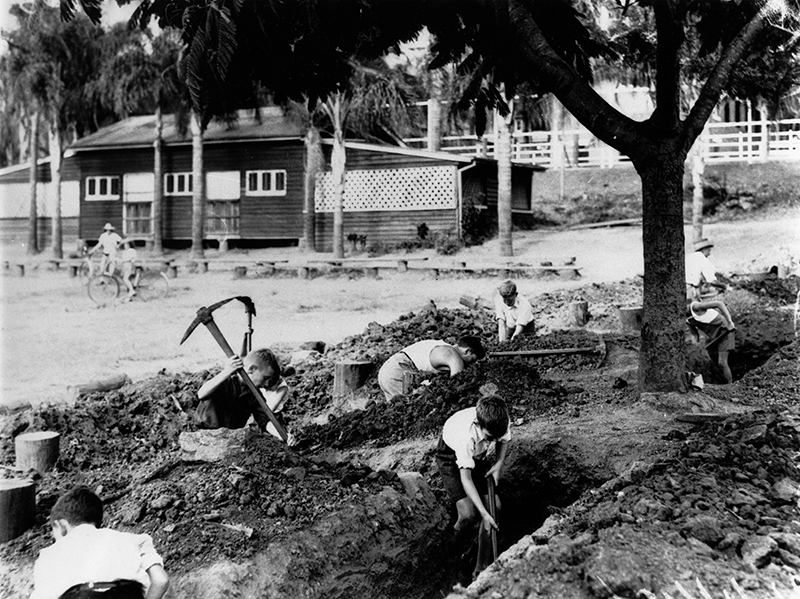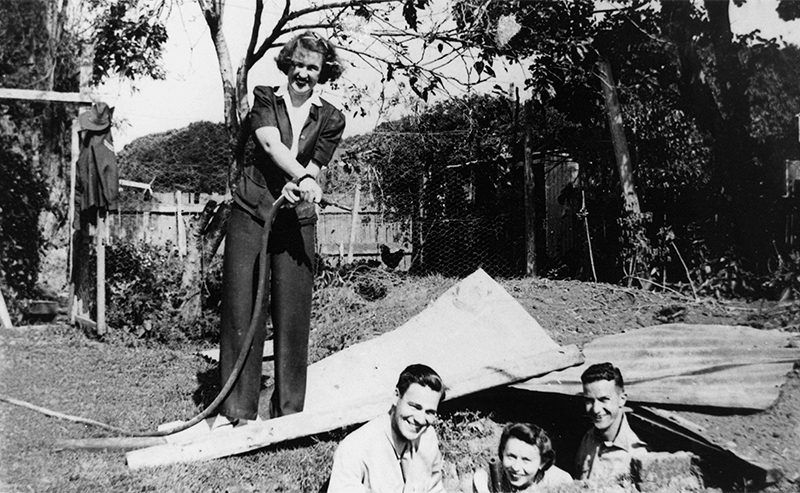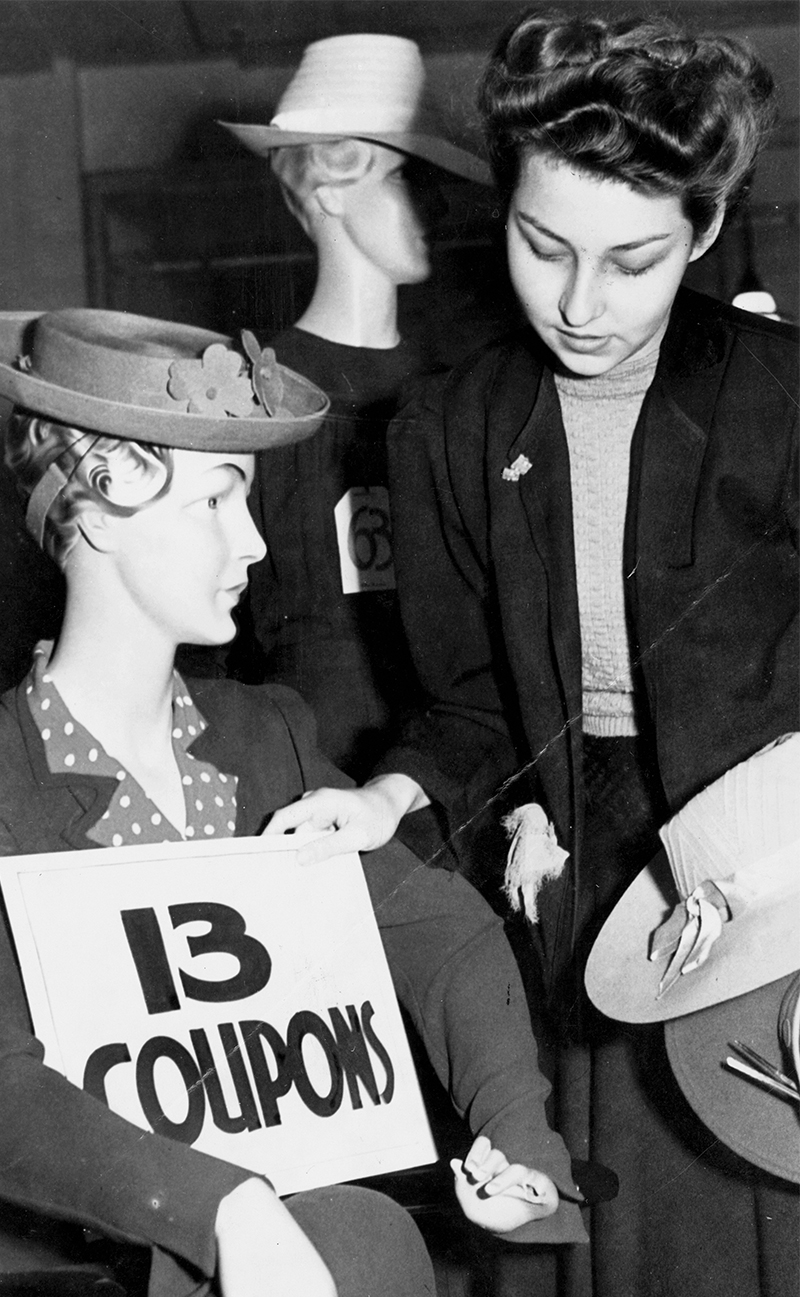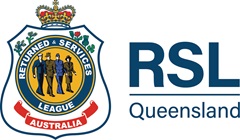
Life in Queensland during WWII
10 August 2020- History & commemoration
After Japan entered WWII in December 1941, everyday life changed drastically. Personal recollections paint a picture of life on the homefront.
From air raid shelters in backyards to rationing food and clothes, and even accommodating troops in their neighborhood, changes to the way Queenslanders lived during the war were sudden and significant.
“All us school kids, we just could not understand what it was about. It was something that was brand new to us, but we just had to virtually realise that we had to live with it, that Australia was at war,” RSL member Roy Hartman recalls.

Children dig trenches at Ascot State School
Troops in the neighbourhood
Roy was a schoolboy living in Granite Creek when the war began. He remembers having troops move into his local area and become a familiar part of life.
“I can always remember as a kid coming home from school and the American Air Force fighters and bombers would come up Granite Creek Gorge on their way back from a mission. [They had] an engine smoking, a hole in here, and half the tail missing. It was a wakeup call for us young fellas, to think that what was going on,” said Roy.
The American Air Force camp settled into Granite Creek in 1942 and integrated with the township, with Roy recalling his personal experiences with the troops.
“We at home, we had mango trees, and bananas and pawpaws, and we used to go over to the Americans with all this fruit. And of course, they'd never seen a mango before, they probably hadn't seen a banana before. But we used to come home with Holy Crumble Bars and chewing gum,” said Roy.
“The Australian Army moved in right opposite our house and my mum was a very, very good scone maker. She used to make scones and take them across to give them to the Diggers. They got to know my mum very well and they used to call her Aunty.”
For Hazel Wilkings (nee Mallyon), who was nine years old when the war broke out in 1939, growing up in Rockhampton during the war meant troops were a regular sight. Hazel and her family would band together with their neighbourhood to support the troops.
“We listened for the troop trains passing through which had Aussie soldiers on them coming home from New Guinea as they often stopped waiting for other trains to come as it was rather a busy line. One late afternoon we heard a train stop and men’s voices calling out – it sounded like ‘paper, paper’. Suddenly my mother realised they were from up north and had been out of touch and wanted some newspapers to read. She quickly sent us around the neighborhood and, joined by friends, we collected as many papers as we could, and all headed for the train. How grateful they were and how eagerly they read them,” recalled Hazel.
Everyone had a part to play
With many men conscripted into training and overseas service, those who stayed at home had to step into their roles, as Terry Norris described on the ABC back in 1973:
“Almost all of the men in Australia went away to the war. My dad, for instance, he trained in an army camp here for about four months and then he was sent up to New Guinea. And we didn't see him again for, ooh, well over two years. And because so many of the men were away at the war, the jobs normally done by them, of course, had to be done by the women. My mum, she worked in a clothing factory. She made army shirts, as a matter of fact,” Terry recalled.
While Hazel’s father wasn’t sent away, he was given responsibilities at home.
“My father worked for the Postmaster General’s Department and this was regarded as a protected industry. However there were jobs for everyone and he became an Air Raid warden and patrolled a certain area and made sure everyone knew what to do and if they had their windows and all lights covered as required,” said Hazel.
Even Hazel herself, along with her classmates, were given tasks to contribute to the war effort: “We all learnt how to knit at school and spent our spare time knitting socks for the soldiers or squares to make rugs.”
Shelters in the backyard
Air raids were a very real threat during the war, with panic increasing after the bombing of Darwin in February 1942 and the failed attacks on Townsville in July 1942. It was common for households to build an air raid shelter in their backyard, as Hazel’s family had done.
“We dug an air raid shelter between the end of the garden…and the garage, and the fowl yard on the other side. My father built it in with a roof and walls to stop it caving in. It was dark and just high enough to stand up in. When it rained, we bailed the water out as it was about a foot deep and it always seemed to be damp and smelly. When we heard the air raid siren it was time to go into the shelter. I was very pleased when the war was over and we could fill it in,” said Hazel.

A backyard air raid shelter in Manly
Living on rations
Many key food items were rationed during the war, with coupons needed to purchase butter, sugar, tea and meat. Petrol was also rationed, forcing many private cars off the roads. Even clothing was in limited supply.

Clothing prices were given in ration coupons
“Clothing became scarce – or should I say materials to make clothes as we were only allowed so many coupons each. My mother bought two grey blankets and made us each a dressing gown and our pajama pants were men’s long underpants with the fly stitched down of course. We must have looked funny, but everyone was in the same situation and we were thankful for anything that helped,” said Hazel.
It took a number of years after the war ended for rationing to be abolished, with coupons required for some items until 1950.
Images courtesy of State Library Queensland
Related News
Loading

